In 1971, a group of citizens in London met to discuss setting up a detoxification clinic. Sr. Mary Doyle, of the Sisters of St. Joseph, chaired the group which included representatives from hospitals, social service agencies, the Addiction Research Foundation, the police, the Salvation Army, and Mission Services. It was planned as a department of St. Joseph’s Hospital to ensure access to the emergency department. Funding was secured from the provincial government. St. Joseph’s Hospital would administer the clinic, while the Addiction Research Foundation would plan services. The Board of St. Joseph’s Hospital appointed Sr. St. Patrick Joyce as the Director of the newly founded St. Joseph’s Hospital Detoxification Clinic in 1973.
The clinic opened on September 13, 1973 at 331 Dufferin Avenue, attached to the Addiction Research Foundation at 477 Waterloo Street. The clinic contained 20 beds for men, with the objective of providing a hospitable environment in which the alcoholic could be detoxified without medication. The resident was given fruit juice or coffee, showered, got in pajamas, and was encouraged to sleep it off. Nourishing meals were served. The clinic had 11 trained staff members, and access to the 28-day program at St. Thomas Addiction Unit and the four-month program at Quinton Warner House, as well as to Alcoholics Anonymous. There were beds, a reception area, living rooms, and laundry and kitchen services. It was a place to dry out, to sleep, to have a meal, and to find a sympathetic listener and services. Staff planted the desire in residents to want to change their lifestyles through individual or group interaction. Three days after admission, the resident could have seizures or hallucinations, in which case he was kept in the observation area and watched, and if necessary, taken to St. Joseph’s Hospital emergency department and kept until his condition stabilized. Less than 5% of residents required hospital treatment.
From 1973 to 1979, the detox clinic handled the highest number of admissions in the province: more than 20,000 admissions reflecting about 3,600 individuals since many were repeat visits. The residents came from all walks of life, and ranged in age from 15 to 84 years, with about 20% having full time jobs. The average stay was two days. Sr. St. Patrick made the point that detox clinics deal with chronic drinkers and their success rates cannot be compared with treatment centres. She explained that detox clinics dry people out in preparation for treatment centres which would reject chronic alcoholics without this preparation. She argued that detox clinics free up hospital beds and are thus the least expensive way to treat chronic alcoholics. From 1972 to 1976, 24 of the detox clinic residents had remained sober for two years, and 65 residents for one year, a success rate that no one could argue with.
In September, 1979, the detox clinic moved to a mansion built by William Spencer, a founder of Imperial Oil, in 1856. The building was located at the corner of Queens Avenue and William Street in London. It had originally been taken over from the Knights of Columbus by the Sisters of St. Joseph in 1949, and run from 1951-1965 as Fontbonne Hall, an orphanage. From 1965-1972, it had housed Vanier Children’s Services, and then Internos, a home for teenaged girls run by the congregation. In 1977, it served as a residence for women attending university and classrooms for St. Joseph’s School of Music. With the move of the detox clinic, the building was renovated to house alcoholic men and women in one half of the house, and women in need in the other. Renovations were completed on March 6, 1980, and 534 Queens Avenue became a refuge for women in need, while 471 William Street became the new detox centre. The facility, now called the Withdrawal Management Centre, could accommodate 20 men and three women, and had a round- the- clock staff of ten men and women. Sister St. Patrick’s dream to help female alcoholics came true, and her patience was rewarded when one woman she worked with for 16 years was finally able to stay sober for one whole year.
During its years in operation, the detox centre at William Street had over 3,300 client visits per year. It provided a haven for intoxicated people who were not allowed into shelter beds, and a place for alcoholics to dry out before treatment. While the clientele was mostly male, 10% were female. In 2005, the province terminated its contract with St. Joseph’s Hospital. The Sisters of St. Joseph sold the William Street building in September, 2005, and the Withdrawal Management Centre moved to the Centre of Hope operated by the Salvation Army on October 31, 2005.
A longer version of this article by Mary Grace Kosta was originally published in the London and Middlesex Historical Society Newsletter, Spring 2020.
